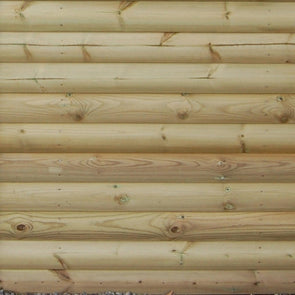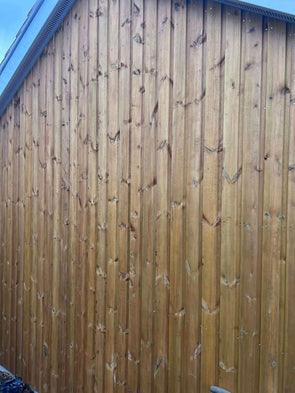Introduction
Choosing the right siding for your home is an important decision that can greatly impact its appearance, durability, and maintenance requirements. With so many options available in the market, it can be overwhelming to make a choice. In this article, we will explore the differences between shiplap siding and traditional siding, and help you determine which option is best suited for your needs.
Shiplap Siding: A Timeless Classic
What is Shiplap Siding?
Shiplap siding is a type of exterior cladding that features overlapping boards with a distinctive groove on one edge and a ridge on the other. This design allows the boards to fit snugly together, creating a tight seal that helps protect your home from the elements.
The Beauty of Shiplap Siding
One of the main reasons why homeowners choose shiplap siding is its aesthetic appeal. The clean lines and rustic charm of shiplap create a timeless look that can enhance the visual appeal of any home. Whether you prefer a modern or traditional style, shiplap siding can be customized to suit your taste.
Benefits of Shiplap Siding
- Durability: Shiplap siding is known for its durability and longevity. The overlapping design provides added protection against moisture, reducing the risk of rot or decay. Easy Installation: Installing shiplap siding is relatively straightforward, making it a popular choice among DIY enthusiasts. The interlocking boards can be easily nailed or screwed into place, saving you time and money on installation costs. Low Maintenance: Shiplap siding requires minimal maintenance compared to other types of siding. A regular cleaning routine and occasional repainting or sealing are usually sufficient to keep it looking fresh and vibrant. Versatility: Shiplap siding can be used both indoors and outdoors, giving you endless possibilities for design and decoration. It can be used to create accent walls, wainscoting, or even as a ceiling treatment.
Traditional Siding: A Tried and Tested Option
What is Traditional Siding?
Traditional siding refers to the more common types of cladding materials such as vinyl, fiber cement, or wood lap siding. These options have been widely used for many years and have proven their durability and versatility.
The Versatility of Traditional Siding
Traditional siding comes in a wide range of materials, colors, and styles, allowing homeowners to choose the option that best matches their preferences and architectural style. From the classic look of wood lap siding to the low-maintenance benefits of vinyl or fiber cement, traditional siding offers something for everyone.
Benefits of Traditional Siding
- Wide Variety: Traditional siding offers a vast selection of materials and finishes to suit any design aesthetic. Whether you prefer the natural beauty of wood or the convenience of vinyl, there is an option that will meet your needs. Affordability: Depending on the material chosen, traditional siding can be a cost-effective solution for homeowners. Vinyl siding, for example, is known for its affordability without compromising on quality. Low Maintenance: Many traditional siding options are designed to be low maintenance, requiring minimal upkeep over time. This can save you both time and money in the long run. Energy Efficiency: Some traditional siding materials, such as fiber cement or insulated vinyl, offer enhanced energy efficiency properties. This can help reduce your heating and cooling costs while improving the comfort of your home.
Shiplap Siding vs. Traditional Siding: Which is Right for You?
When it comes to choosing between shiplap siding and traditional siding, there are several factors to consider:
Aesthetic Preference: Do you prefer the rustic charm of shiplap or the versatility of traditional siding? Consider what style suits your home and personal taste.
Budget: Evaluate your budget and determine which option aligns with your financial goals. Shiplap siding may require a higher upfront investment, while traditional siding offers more affordable options.
Maintenance: Assess how much time and effort you are willing to dedicate to siding maintenance. Shiplap siding is generally low maintenance, but traditional siding materials may require more frequent upkeep.
Climate: Consider the climate in your area. Shiplap siding's overlapping design provides better protection against moisture, making it ideal for areas with high humidity or heavy rainfall.
Installation: Determine whether you plan to install the siding yourself or hire a professional. Shiplap siding can be DIY-friendly, while traditional siding may require specialized tools and skills.

Longevity: Think about the lifespan you expect from your siding. Shiplap siding is known for its durability, but certain traditional siding materials can also offer excellent longevity.

By carefully considering these factors, you can make an informed decision that best suits your needs, preferences, and budget.
FAQs
Can shiplap be used as interior wall cladding?- Yes, shiplap is a versatile material that can be used both indoors and outdoors. It adds character and texture to any space, making it a popular choice for interior wall cladding.
- While shiplap siding can be left unpainted for a natural wood look, many homeowners choose to paint or stain it to match their desired aesthetic. Painting also provides an extra layer of protection against the elements.
- Traditional wood lap siding can be susceptible to rot if not properly maintained. Regular inspections, repairs, and protective coatings are essential to prevent moisture damage.
- Fiber cement siding is a type of traditional siding made from a mixture of cement, sand, and cellulose fibers. It offers excellent durability, resistance to rot and pests, and can mimic the appearance of wood or other materials.
- Vinyl siding is designed to withstand various weather conditions, including high winds, rain, and snow. It is highly durable and resistant to fading, cracking, or warping.
- Traditional insulated vinyl siding or fiber cement siding with added insulation can provide improved energy efficiency by minimizing heat loss or gain through your walls. Shiplap siding does not offer the same level of insulation properties.
Conclusion
Choosing between shiplap siding and traditional siding ultimately depends on your personal preferences, budget, maintenance requirements, climate conditions, and desired aesthetic. Both options have their own unique benefits and can enhance the beauty and functionality of your home. Consider all these factors carefully before making a decision to ensure that you choose the right siding option for your needs. Whether you opt for the timeless charm of shiplap or the versatility of traditional siding, your home will surely benefit from either choice.
" width="560" height="315" frameborder="0" allowfullscreen>